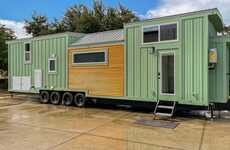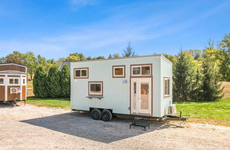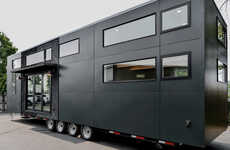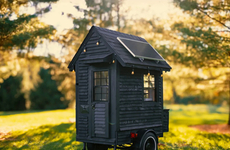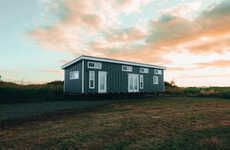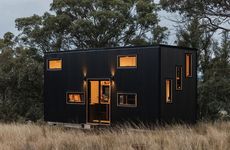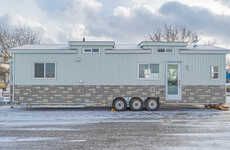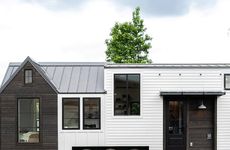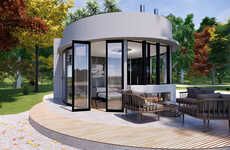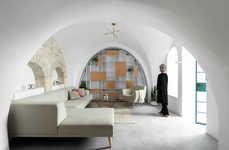
The Handcrafted Movement 'Pacific Harbor' Tiny Home is Spacious
Michael Hemsworth — January 30, 2020 — Art & Design
References: handcraftedmovement & yankodesign
The Handcrafted Movement 'Pacific Harbor' tiny home is an expertly appointed living space for those seeking to shake off the shackles of a conventional home or even as a more cost-effective alternative to traditional real estate.
The home is built on a 30-foot by 8.5-foot triple-axel Iron Eagle trailer and offers a spacious interior that has been thoughtfully designed in order to maximize the small footprint. This consists of a flex space on the main floor that can be used as a living space, office and a bedroom, while the elevated sleeping loft in the rear offers a cozy oasis for one or two inhabitants.
The Handcrafted Movement 'Pacific Harbor' tiny home boasts all the essential amenities of a conventional home, but doesn't feel cramped thanks to an attention to open air aesthetics.
Image Credit: Yanko Design
The home is built on a 30-foot by 8.5-foot triple-axel Iron Eagle trailer and offers a spacious interior that has been thoughtfully designed in order to maximize the small footprint. This consists of a flex space on the main floor that can be used as a living space, office and a bedroom, while the elevated sleeping loft in the rear offers a cozy oasis for one or two inhabitants.
The Handcrafted Movement 'Pacific Harbor' tiny home boasts all the essential amenities of a conventional home, but doesn't feel cramped thanks to an attention to open air aesthetics.
Image Credit: Yanko Design
Trend Themes
1. Tiny Homes - The growing popularity of tiny homes presents an opportunity for innovative design solutions and efficient use of space.
2. Minimalist Living - The trend towards living with less creates a need for compact, well-designed living spaces that offer essential amenities without sacrificing comfort.
3. Sustainable Housing - The demand for eco-friendly and energy-efficient homes is driving the development of innovative building materials and technologies for small living spaces.
Industry Implications
1. Real Estate - Real estate developers can explore the market potential of tiny homes as a more cost-effective alternative and design sustainable living solutions for the future.
2. Architecture and Design - Architects and designers can create unique, functional layouts for tiny homes that maximize space utilization and provide a comfortable living experience.
3. Construction and Manufacturing - Construction companies and manufacturers can develop efficient building methods and customizable solutions to meet the growing demand for tiny homes and sustainable housing.
7
Score
Popularity
Activity
Freshness


